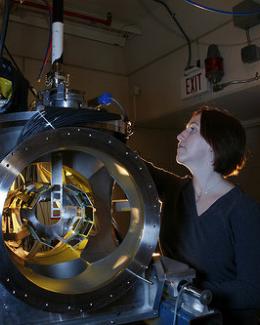Abstract
When a compound nucleus is formed at an excitation energy above the neutron-separation threshold, it is assumed that its de-excitation will proceed via neutron emission. However, if the excited nucleus is in a high-spin state, but does not have enough excitation energy to conserve angular momentum by either photon emission after neutron emission or relative angular momentum carried off by the neutron, the nucleus will de-excite via γ-emission instead. This effect, the spin inhibition, provides an insight into the structure of the compound nuclei and can aid the understanding of the distribution of the populated spin states in a compound nuclear reaction. In this work, the effects of spin inhibition on the γ-decay probabilities from states in 146,147Sm and 160Dy are presented. For high-spin states above the Sn, spin inhibition is able to suppress neutron emission, and de-excitation via γ-ray emission is observed for states up to 3 MeV above the Sn.


